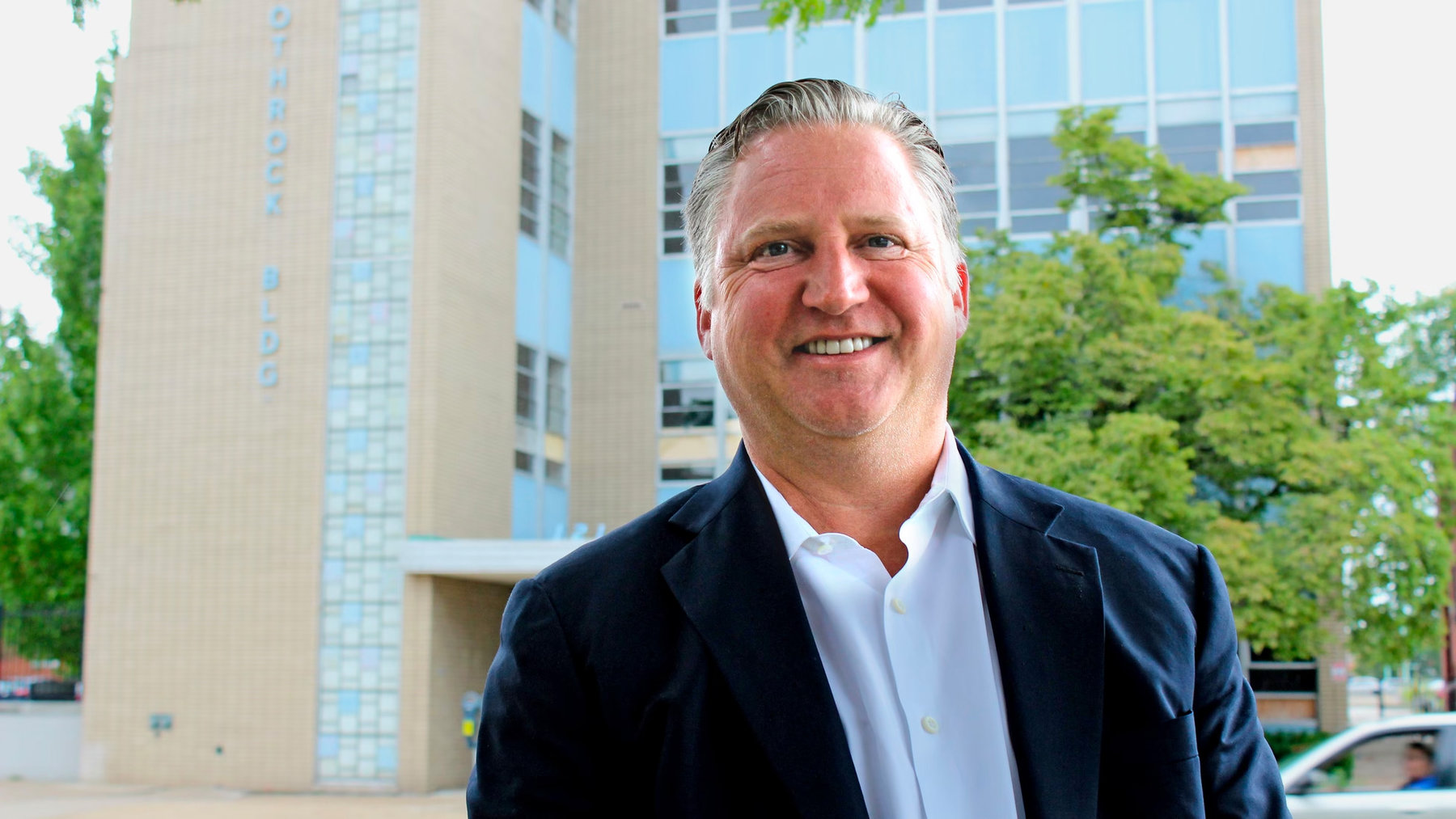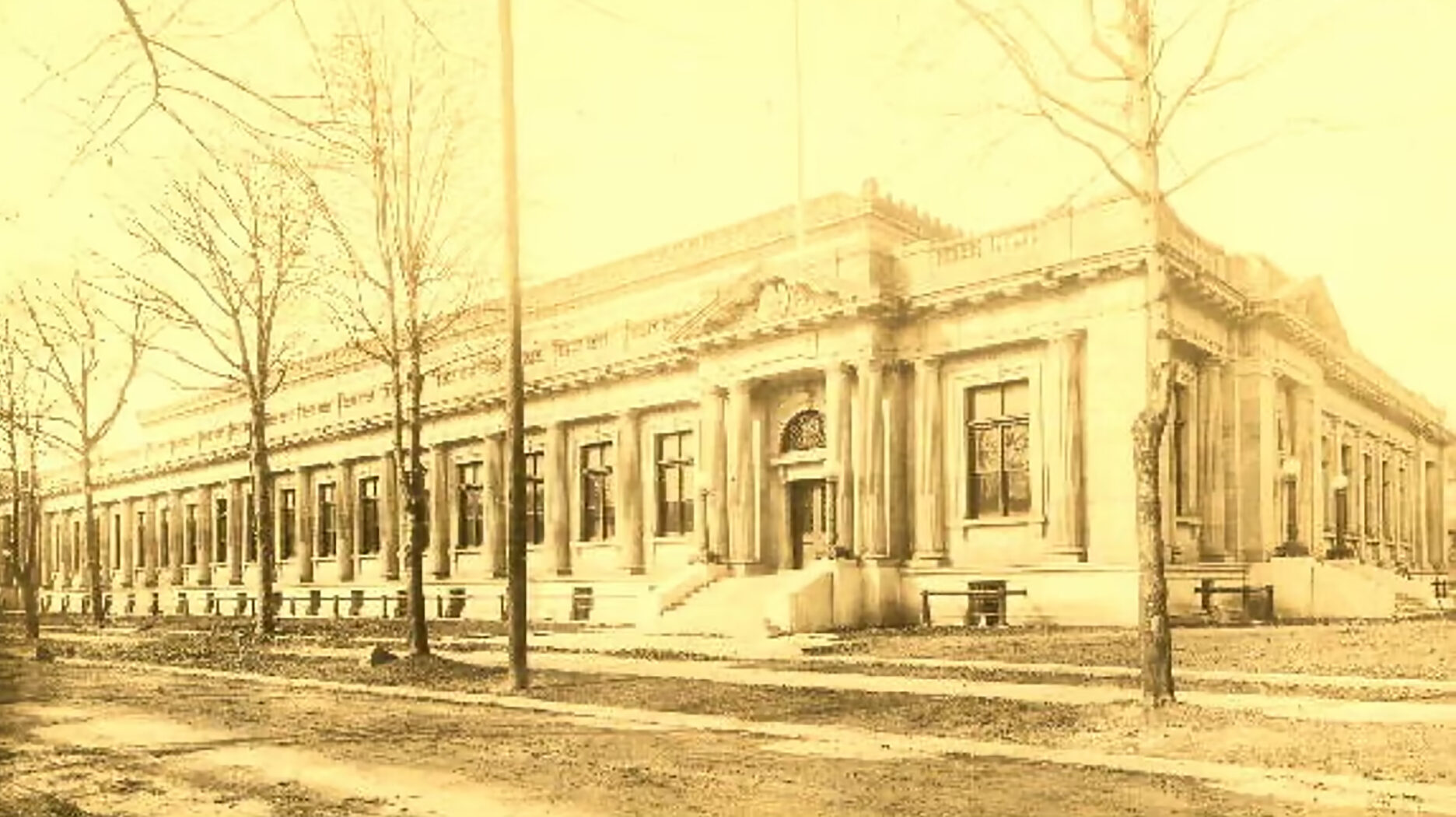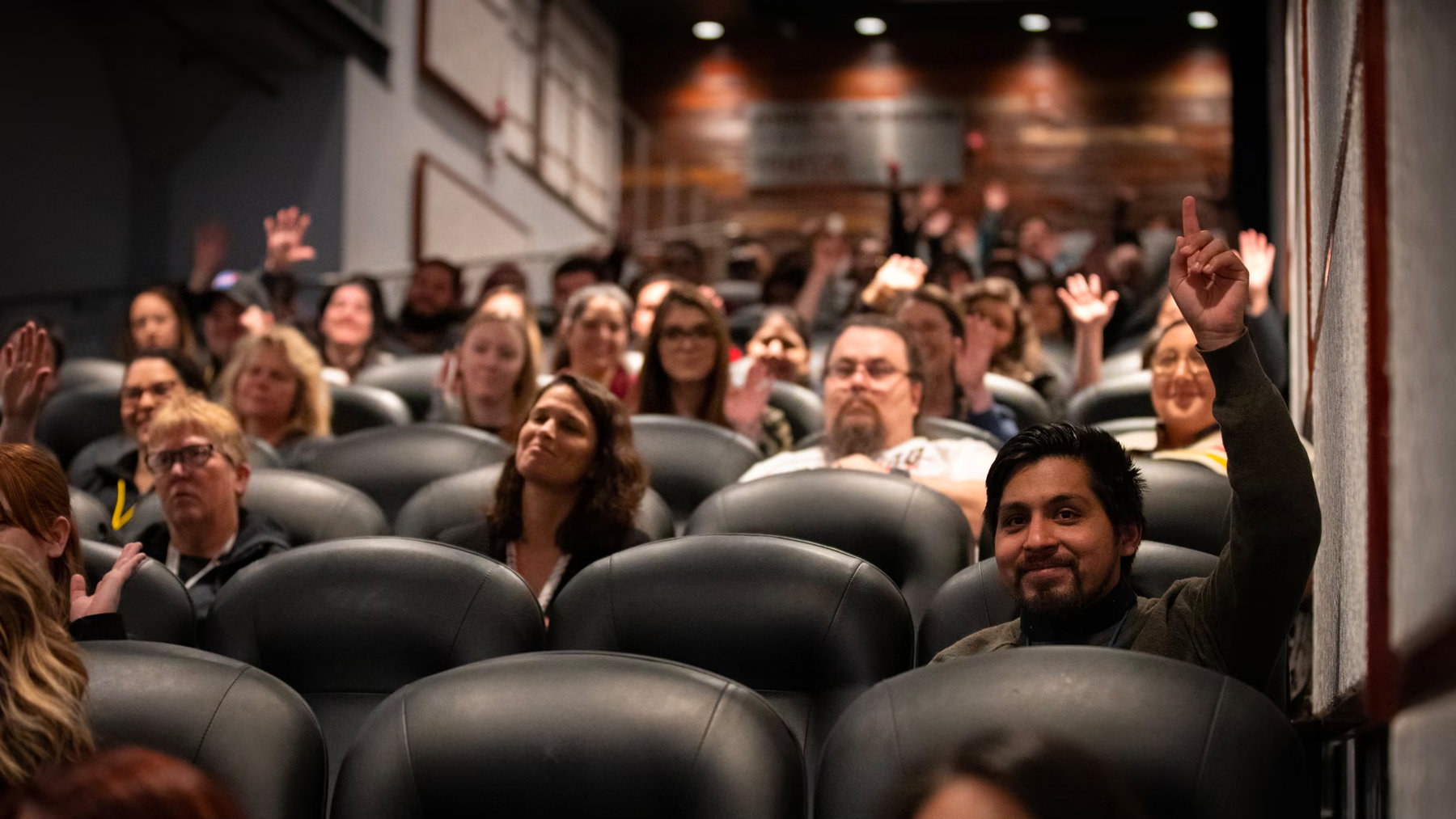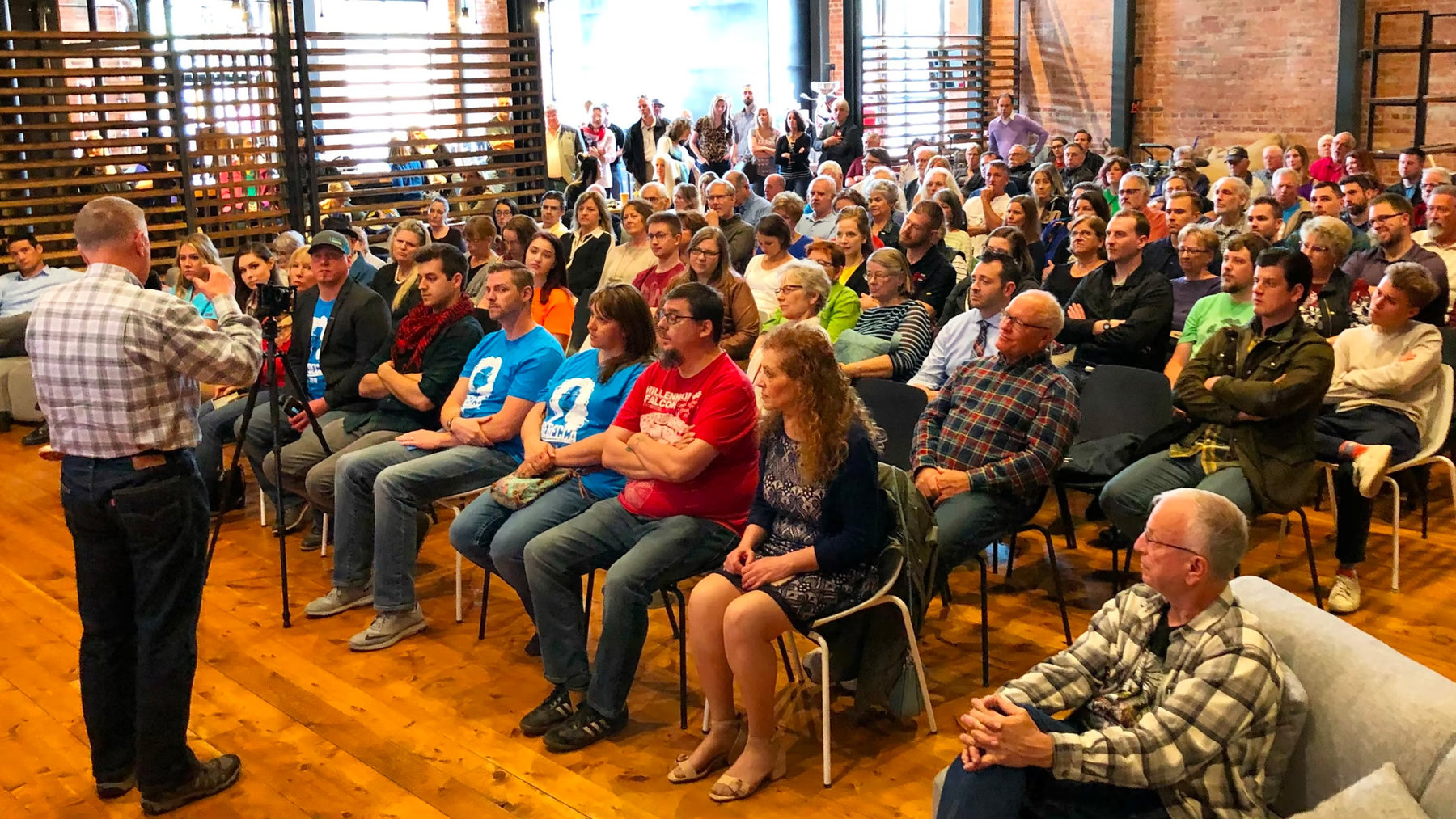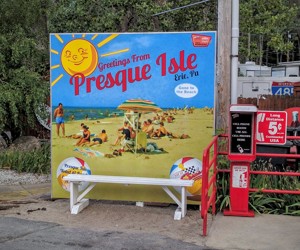
A few days later, incumbent United States Senator Pat Toomey, a Republican who is running for reelection in a state where Trump is running far behind, came to Erie for a meet-and-greet at a popular summer-evening spot, Sara’s hotdog stand on the state park of Presque Isle.
For instance:
Basic Questions of Growth and Decline
Erie was for decades the third-largest city in Pennsylvania, after Philadelphia and Pittsburgh. But its population has fallen from about 140,000 in the 1960s to about 100,000 now, making it fourth-largest, after Allentown (which we visited and wrote about here). Erie’s role as a refugee-resettlement locale is a significant reason it has stayed as large as it has.
Old Economy, New Economy
On the way into town from the Tom Ridge International Airport along 12th Street, you pass one abandoned-looking factory after another. (Former Pennsylvania Governor and U.S. Homeland Security Secretary Ridge is from Erie, along with the late air-combat theorist John Boyd and C-Span anchor and executive Steve Sculley.) On the way out of town, driving toward Penn State’sBehrend campus, you pass another huge factory whose roof is simply falling in, and all of this is apart from the steady contraction at GE.

That’s the obvious part. What was more surprising was learning that work is still underway in most of those factories (though not the one above); that advanced manufacturing is expanding in the area even as the largest factories are shrinking (as explained in thisJefferson Educational Societypaper by Perry Wood and Jim Wertz); that tech incubators are full of new companies; and that Penn State, Behrend, has extensive connections with manufacturers aimed at keeping higher-wage manufacturing in the area and preparing local people for those jobs.
Structural Unfairness
National-level governance in the United States is hobbled by a number of no-longer-sensible but almost-impossible-to-change structural rules. The nine Supreme Court Justices should have staggered 18-year terms, so that every president would get an appointment every two years, in place of today’s grim actuarial battles over lifetime posts. Line-drawing for congressional districts and state legislatures should follow California’s nonpartisan anti-gerrymandering system, rather than being one more frontier for all-out partisan warfare. A “National Popular Vote” provision would give voters around the country equal incentive to turn out, rather than today’s overemphasis on Florida, Pennsylvania, and Ohio. And don’t get me started on the Senate. All these rule-changes would be sensible; none is likely.
At the civic level, we wrote last year about how San Bernardino’s flawed city charter, which forces California’s poorest city to pay police and firefighter salaries pegged to the richest cities in the state, compounded its many other problems. As Ryan Hagen of the San Bernardino Sun has reported, another effort to change that charter has made its way onto this year’s ballot.
Not long ago, Erie’s school system threatened simply to close its public high schools unless the funding inequities were resolved. (Pennsylvania requires districts to offer schooling only up to age 14. In practice, Erie would have paid to bus the students to the surrounding, much better-funded suburban schools.)
With effort and ingenuity, leaders can work around some local and national problems. But some problems are impossible to solve unless prevailing rules are changed. As we’ll explain in forthcoming reports, Erie’s school-funding problem is one of them.
“New Americans”
At the far western end of Pennsylvania, with Buffalo 100 miles up the lake shore in one direction and Cleveland 100 miles away in the other, Erie might seem isolated and insular. But its population is internationally diversified. Refugees, not just “normal” immigrants, make up some 10 percent of its population, which would be comparable to some 32 million on the national scale. We met Albanians, Bosnians, Bhutanese, Burmese, Syrians, and many others.
These are the very people Donald Trump warned against in his speech in Erie. (“Syrian refugees—we have no idea who they are, where they’re coming from, no paperwork. You saw what happened in San Bernardino. You saw what happened—frankly, take a look at all over the world. Take a look at what’s happening.”) The reaction in Erie itself seemed quite different from Trump’s.
Self-Image and Generational Split
A negative image of a region and its possibilities has been an important background factor, and sometimes a motivator, in many places we have reported from. For instance: Columbus, Mississippi; Fresno and San Bernardino, California; Allentown, Pennsylvania; and Charleston, WestVirginia. That’s true in “Dreary Erie” and other cities in the Buffalo-Erie-Cleveland-Detroit arc as well, and for some of the people there.
For other people, it looks different: For example, some of the software and techentrepreneurs we saw at the Radius CoWork space in downtown Erie, some of whose stories we’ll tell. “We’re nothing but optimistic about this place,” one of them said. “It’s such a large canvas to paint on.” What about their parents’ generation, which was so downcast? “It’s time to move on.”
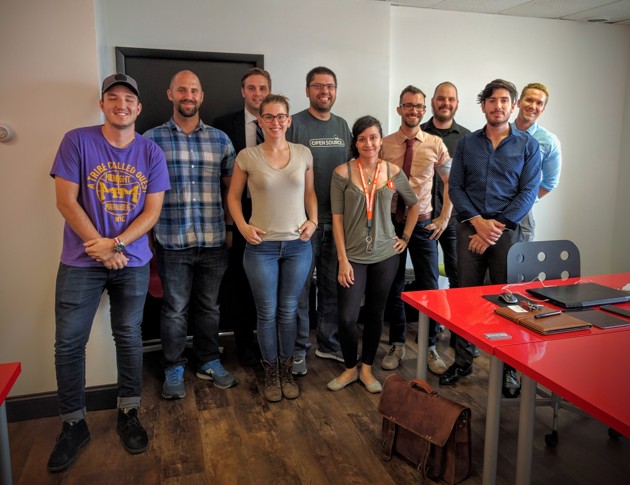
Fragmentation Versus Connection
This is exactly the kind of traditional, wage-earning, working-class community that, when subject to economic stress, can lose social cohesion, too, as described in Bowling Alone or Hillbilly Elegy. There is evidence of that loss in this part of the country, but also evidence of a surprising (to us) effort to re-knit the social fabric.
Erie’s downtown still has some of its “good bones,” but not enough of them are occupied by “real” businesses now. We’ve seen cities all along the cycle of downtown redevelopment, from those that are fully polished, like Greenville, South Carolina’s, to those that are just beginning, like Fresno’s. Erie has a long way to go, but a successful entrepreneur named Joel Deuterman, shown at top, has decided to play a central role in leading the transformation.
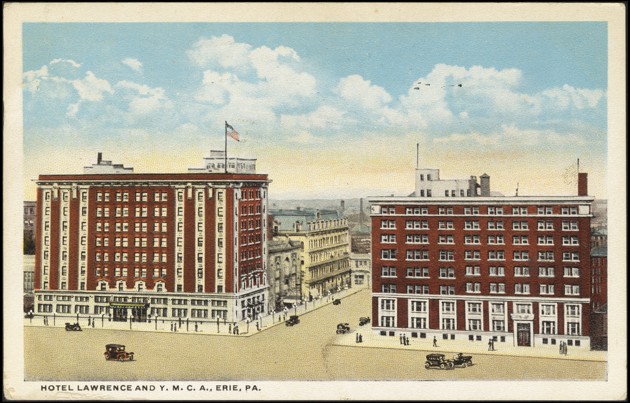
A few weeks ago, Deuterman announced that he was moving his tech company, Velocity Network, to a now-vacant building downtown and that he would be investing in restaurants, cafés, and other common areas in the vicinity to make downtown more attractive for working, shopping, dining, and eventually condo- and apartment-living. “When I was younger, I thought that business was a kill-or-be-killed proposition,” Deuterman, who is now in his early 50s, told us. “I came to realize that if I did things with an awareness of the common good, the benefits would also come back to me, and with a heck of a lot less effort.” We’ll explain why we came to take statements like this seriously.
Arts, Local-ism, and Tourism
Lots of effort on this front as well, about which we’ll say more.
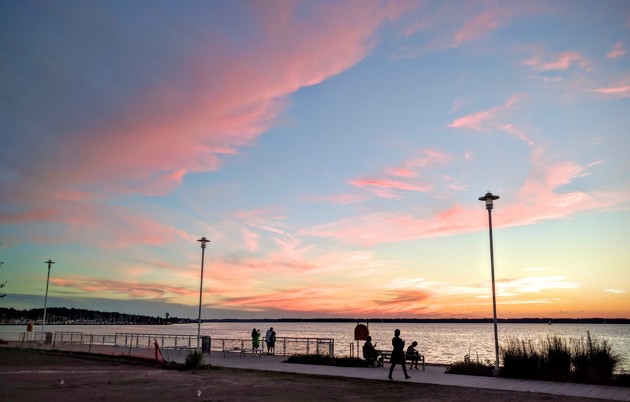
This is part of what we saw on an initial week in a medium-sized town and why we’re going back to learn more. In coming reports, Deb and I will say more about what we’ve heard so far on many of these themes.
The real point for now is how stark we found the contrast: on the one hand, the flattened terms—”angry,” “resentful,” “hopeless”—the language of media and politics uses to describe America in general; on the other hand, the engaged, changing realities people understand about the places where they actually live. The point may sound banal, but it has consequences. In the very same terrain that was just described as Rust Belt loser-land in a big presidential-campaign rally, and whose urban landscape clearly shows the structural and human marks of traumatic change, people are also trying to anticipate and adapt to those changes, to improve their individual and collective futures, and generally to behave as if they are actors in their own dramas, rather than just being acted-upon. Being active, rather than passive, is one working definition of today’s American Idea.

